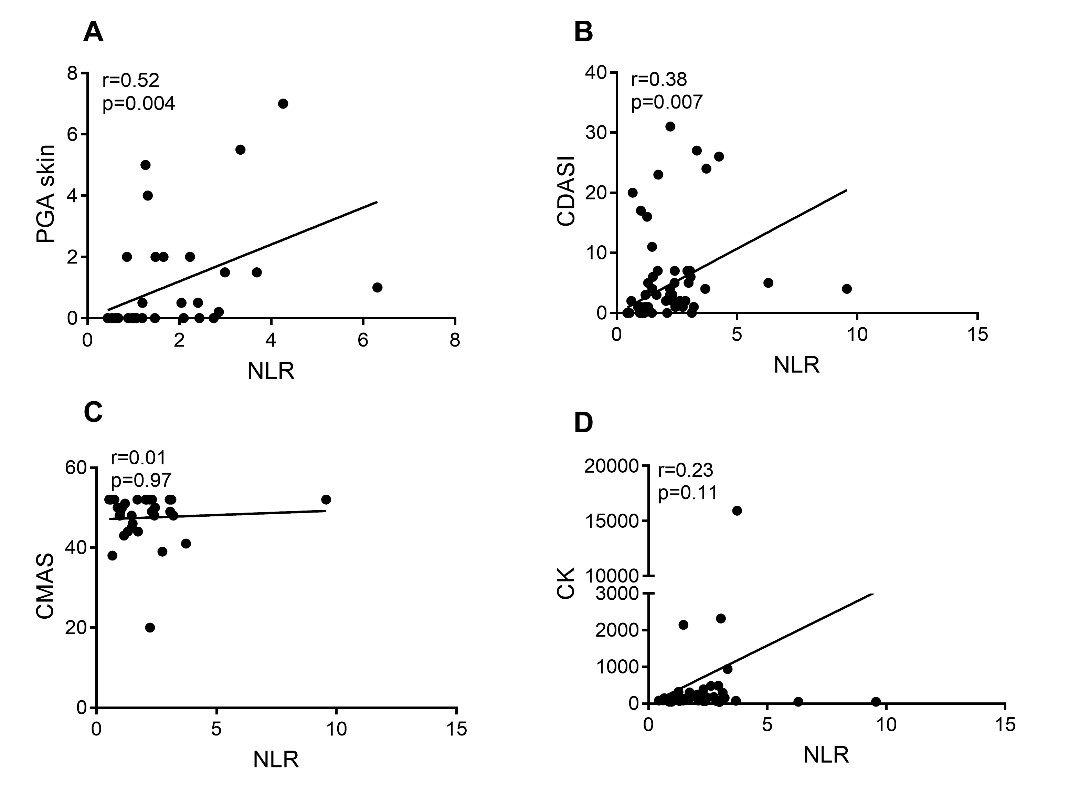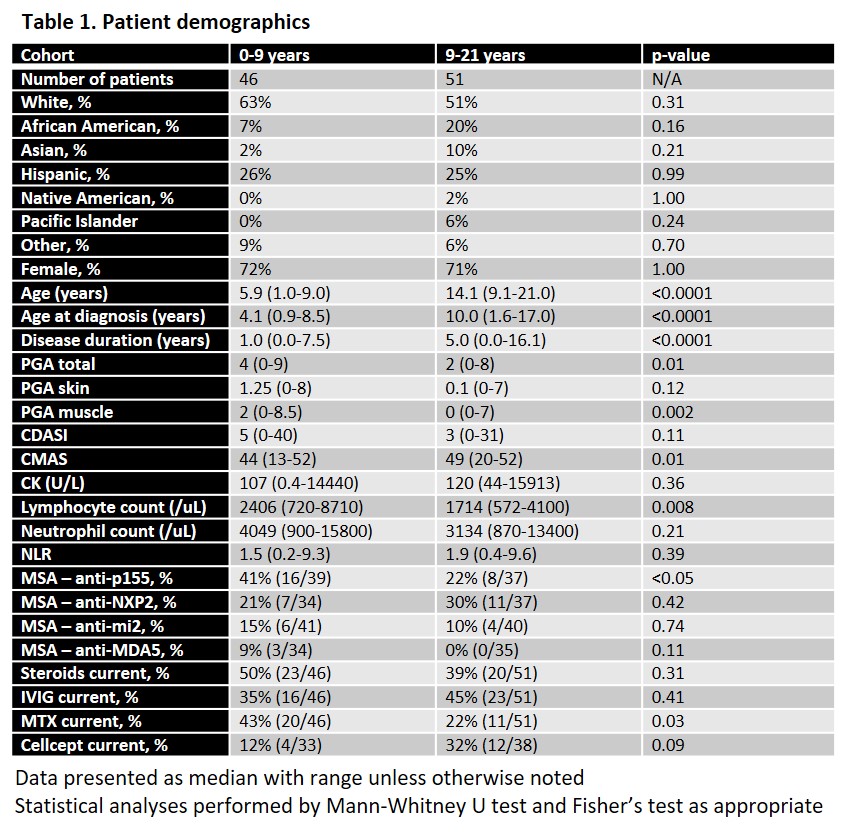Session Information
Session Type: Poster Session B
Session Time: 10:30AM-12:30PM
Background/Purpose: Exaggerated neutrophil activation can lead to inflammation and organ damage in rheumatic diseases, including dermatomyositis (DM). In both juvenile (JDM) and adult DM, markers of neutrophil activation are associated with higher disease activity. Recent findings from adult DM suggest that the ratio between neutrophils and lymphocytes, NLR, is associated with global disease activity as measured by Myositis disease activity assessment visual analogue scales (MYOACT). However, the clinical utility of NLR in the setting of JDM has not been assessed.
Methods: Neutrophil and lymphocyte count were recorded for 97 children with JDM from three independent sites in the United States, and associated with disease activity measures, including physician global assessment (PGA, 0-10 visual analog scale), as well as individual PGA for skin and muscle, Manual Muscle Testing 8 (MMT-8), Childhood Myositis Assessment Scale (CMAS) and Cutaneous Dermatomyositis Area and Severity Index (CDASI). Patients were divided into two cohorts based on age, 0-9 (n=46) and 9-21 (n=51), to account for age related variability in cell counts. For statistical analyses, missing data were excluded from analysis. Statistical tests include Spearman’s correlation and Mann-Whitney U test.
Results: Older children had higher age of diagnosis (10 (range 1.6-17.0), vs 4.1 (0.9-8.5, p< 0.0001)), longer disease duration (5 vs 1, p< 0.0001) and lower global and muscle disease activity by PGA (2 vs 4, p=0.01) and CMAS (49 vs 44, p=0.01, Table 1). Older children were less likely to use MTX (22% vs 43%, p=0.03) and had lower frequency of anti-p155 (22% vs 41%, p< 0.05). Neither MSA nor treatment regiment were associated with NLR in the older children. Among older children, NLR correlated with skin involvement (PGA skin: r=0.52, p=0.004; CDASI: r=0.38, p=0.007, Figures 1A-B), whereas an inverse correlation to skin involvement was seen in younger children (PGA skin: r=-0.41, p=0.02). Of note, the correlation with PGA skin was only observed for NLR and not individual cell counts. No associations with muscle activity, including CMAS (r=0.01, p=0.97, Figure 1C), creatinine kinase (CK) level (r=0.23, p=0.11, Figure 1D) or MMT-8 (r=-0.01, p=0.97), were noted.
Conclusion: Assessing NLR is challenging in children due to age-related variability in neutrophil and lymphocyte count. Our multicenter study noted that in older JDM patients, NLR may serve as a biomarker of active cutaneous involvement but not muscle. This is in contrast to adult DM, where NLR corresponded to both skin and muscle involvement. Larger multi-center cohorts are warranted to validate the findings and assess the role of treatment, including steroids, in affecting NLR.
To cite this abstract in AMA style:
Swaminathan S, Naik N, Shenoi S, Vandenbergen S, Turnier J, Zheng Z, Neely J, Andrews J, Lood C. Neutrophil Lymphocyte Ratio as a Novel Marker of Skin Disease Activity in Older Children with Juvenile Dermatomyositis [abstract]. Arthritis Rheumatol. 2024; 76 (suppl 9). https://acrabstracts.org/abstract/neutrophil-lymphocyte-ratio-as-a-novel-marker-of-skin-disease-activity-in-older-children-with-juvenile-dermatomyositis/. Accessed .« Back to ACR Convergence 2024
ACR Meeting Abstracts - https://acrabstracts.org/abstract/neutrophil-lymphocyte-ratio-as-a-novel-marker-of-skin-disease-activity-in-older-children-with-juvenile-dermatomyositis/


